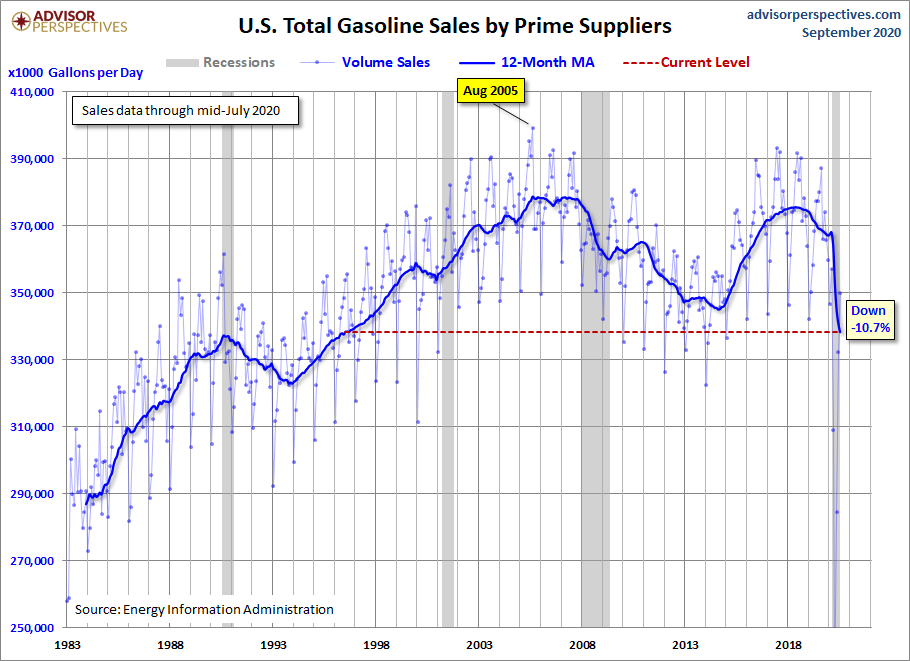Gasoline Volume Sales: July 2020
The Department of Energy's Energy Information Administration (EIA) monthly data on volume sales is several weeks old when it released. The latest numbers, through mid-July, are now available. Gasoline prices and increases in fuel efficiency are important factors, but there are also some significant demographic and cultural dynamics in this data series.
Because the sales data are highly volatile with some obvious seasonality, we've added a 12-month moving average (MA) to give a clearer indication of the long-term trends. The latest 12-month MA is 10.7% below its all-time high set in August 2005 and has surpassed its -8.6% low set in August 2014 after the last recession.
The next chart includes an overlay of real monthly retail gasoline prices, all grades, and formulations, adjusted for inflation using the Consumer Price Index (the red line). We've shortened the timeline to start with EIA price series, which dates from August 1990. The retail prices are updated weekly, so the price series is the more current of the two.
As we would expect, the rapid rise in gasoline prices in 2008 was accompanied by a significant drop in sales volume. With the official end of the recession in June 2009, sales reversed direction. As a result of COVID-19 and the resulting recession, both gas prices and sales have dropped rapidly. The moving average for the latest month is 10.4% below the pre-Great recession level. Clearly, gasoline prices were falling beginning in 2018 and the global pandemic facilitated a further and rapid drop.
Average Daily Volume Sales Per Capita
The next chart adjusts the 12-month MA of sales volume for population growth based on the monthly data for Civilian Non-Institutional Population over age 16 from the Bureau of Labor Statistics, via the St. Louis FRED repository. What we see here is that gasoline sales on a per-capita basis are 12.9% higher than at the end of the Great Recession despite the COVID-19 recession. The gallons-per-capita series includes the complete EIA data, but since we're using the 12-month MA, the blue line starts in 1984. We see the double peak in March 1989 (the all-time high) and August 1990. The latest per-capita daily average is 3.2% below the 1989 high.
What does this analysis suggest about the state of the economy? The economic recovery after the Great Recession did not seem to improve the plight of gasoline sales. Interestingly, the COVID-19 pandemic has caused the current recession, which has in turn spawned a new appreciation for the All-American Road Trip as a result of travel restrictions and virus fears. Thus, we see a spike in per-capita gasoline sales.






